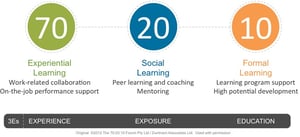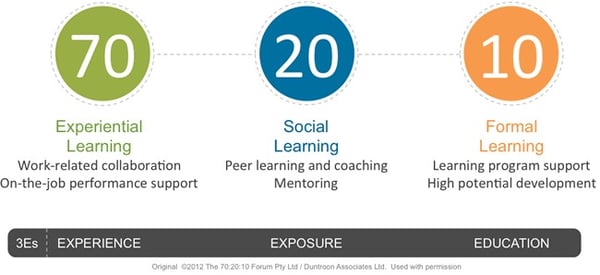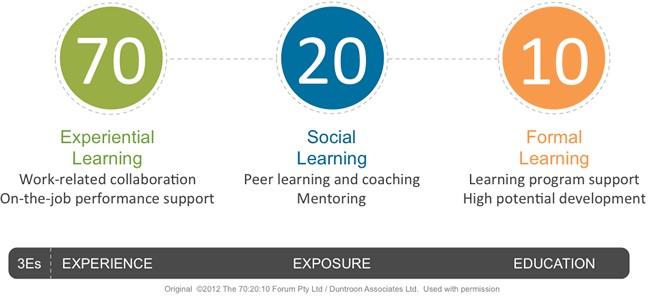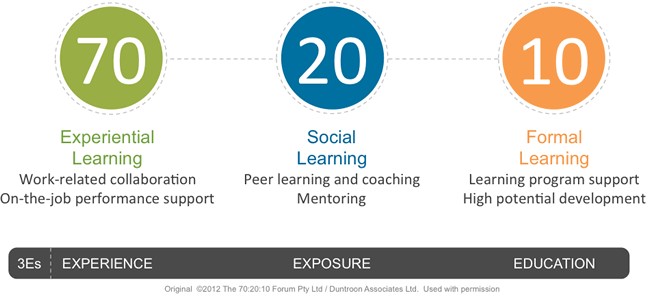


You hear a lot about Social Learning when talking about learning and development. It’s not a new concept, but it has evolved over time. Learn how to incorporate social learning opportunities into your overall training.

Source: Riversoftware.com
According to Albert Bandura, the originator of the social learning theory, “learning is not purely behavioral; rather, it is a cognitive process that takes place in a social context.” It has evolved from simply modelling others to people learning together. Over 50% of what’s taught by the traditional lecture method is forgotten within an hour if it’s not applied.
3 Key Trends in Social Learning
How Does Social Learning Theory Fit Into Your Training Design?
Social Learning is based on the 70:20:10 principle. In addition to structured classes, learning with other people through coaching and mentoring is a critical part in learning and development. Hands-on experience is the most effective way to transfer knowledge. The 70:20:10 Model conveys the optimal sources of learning by successful managers.
Here’s how it works:
70% Experiential Learning – Learning and developing through day to day tasks, challenges and practices.
20% Social Learning – Learning and developing with and through others. This relies on relationships and connections with others.
10% Formal Learning – Learning and developing through structured modules, courses and programs.
Once you cover the topic you’re teaching in a formal module, allow time for participants to work with a small group of peers to discuss the topic further. Then, have them work on a related challenge together and present their findings to the larger group.
Corporations are building workspaces that foster social learning. Small, open meeting areas are available to encourage impromptu conversations with co-workers. This facilitates problem solving and innovation by making it easier for co-workers to informally gather in a relaxed environment.
You can take this a step further and start a social learning program for your company. Closed LinkedIn Groups are a great way for employees to share content with each other.
Help People Learn Twice as Much in Half the Time
The Bob Pike Group has helped 95% of Fortune 100 companies with measurable training and performance solutions. There are several workshop options to choose from:
Don't miss out on updates and chances
to sharpen your skills with participant-centered learning.




3740 N Chestnut St #113 - Chaska, MN 55318-3053